Belgrade. City of Commons - Ksenija Radovanovic
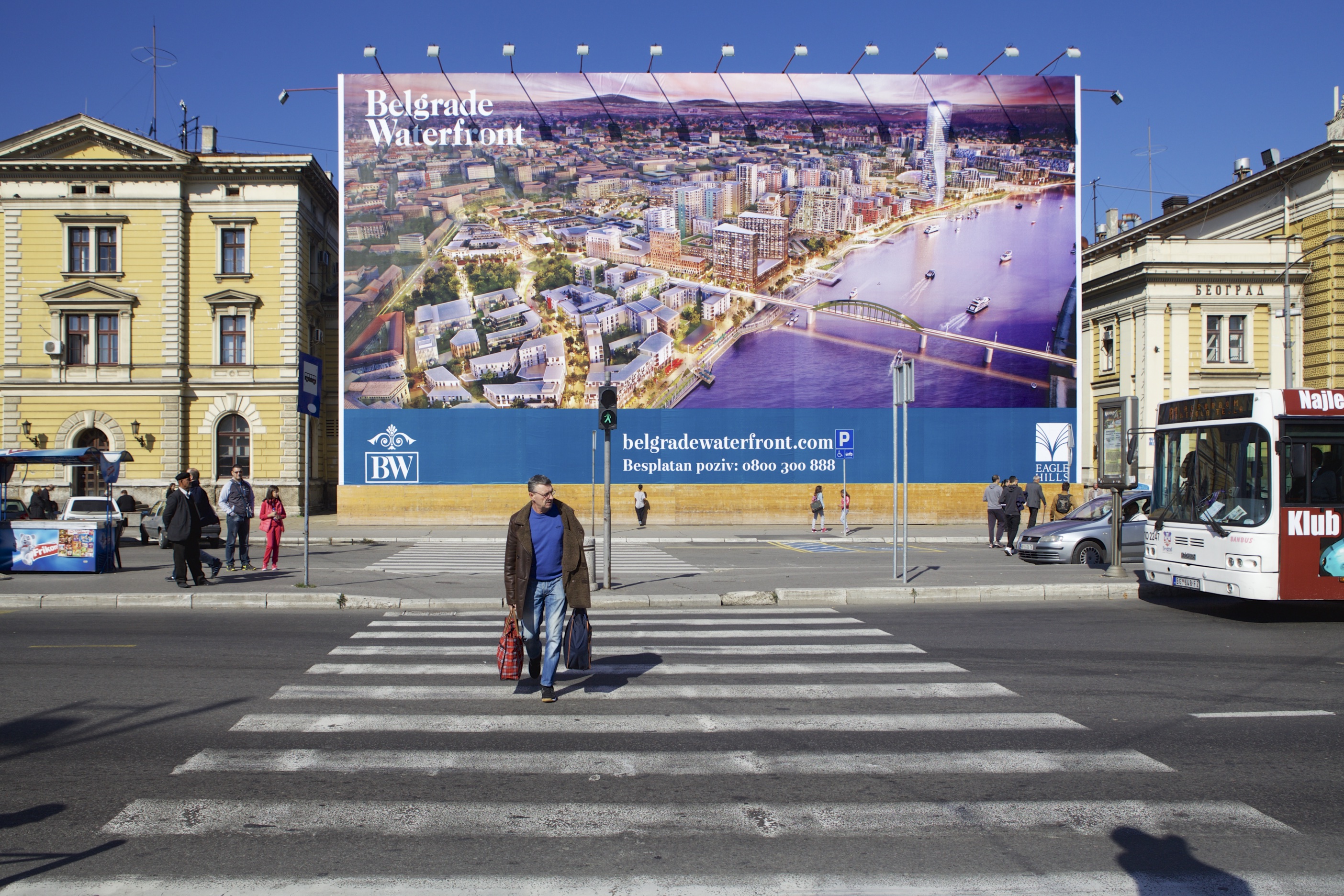
We reach the Station square and we stop in front of the huge billboard advertising the disputed project for the Belgrade waterfront. Ksenija tells us about the story of this huge project which aims to change the face of the city. Shiny images of the generic projects for Belgrade's new identity have been an element of electoral campaigns in Serbia a couple of times before. The difference was that this time, along with the project, "the investor" was presented to the public - the Abu Dhabi real estate developer Mohamed Alabbar with strong personal connections with the, soon to be, Serbian Prime minister. After the elections were won, things started happening... and happening fast. Although this kind of development (with elements such as the biggest shopping mall in the Balkans sitting practically on the river bank next to a 230m high tower that would surges from the river Sava while surrounded by a large amount of very tall residential buildings forming a wall that destroys the panorama views we enjoy and recognize) was against Serbian laws and urban plans, that meant nothing to the political elite that now had the institutional power to craft state regulations to its will.
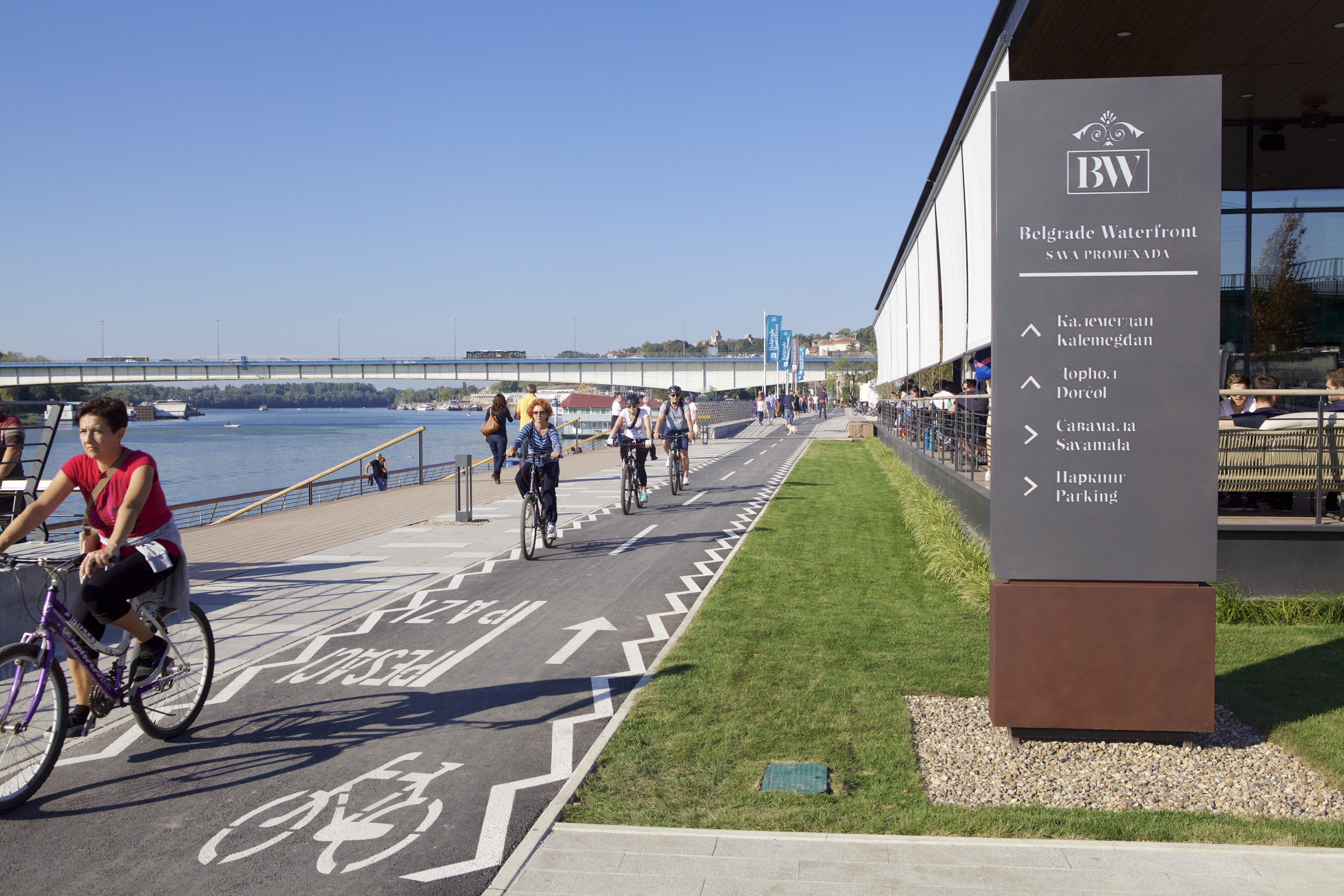
As a first step, the project, although formally nonexistent and known only from the newspapers, was declared as a project of special, national, interest without any explanation or public debate. The second move was to erase everything concerning this area from the existing General urban plan of Belgrade. Civil society, professionals, even some official institutions were objecting this decision, but all admonitions were rejected. Then a new plan designed by the Urban planing institute of Belgrade (but "strangely" mimicking the visions already provided by the private investors) was put in force. This illegal plan was followed by a new special law (Lex specialis) which allowed the state to expropriate private land for residential and commercial developments, overriding not only the basic law on expropriation but also the Serbian Constitution. For the first time it is acceptable that the state makes you leave your home because someone wealthier wants to live there.
These PR and legal "preparations" lasted for more than a year before Serbia actually signed the contract with the investor. The contract was held secret for 5 months and when it was made public it disclosed many irregularities including the significantly smaller amount of money that our foreign partner was supposed to invest (150 millions of euros instead of 3,4 billions announced), significantly higher amount of loans for the Serbian part, deadline for the first revaluation of the project set for 20 years (the project is supposed to be completed in 30 years), ban on changing Serbian laws if the changes would effect the contract etc.
This process depicts how an entire crucial central district of the city can be stolen from it's citizens, but and also how easy it is for laws, institutions and policy tools to be arbitrarily dismantled and diverted from democratic processes to meet private interests thus giving a speculative project like this one a green light.
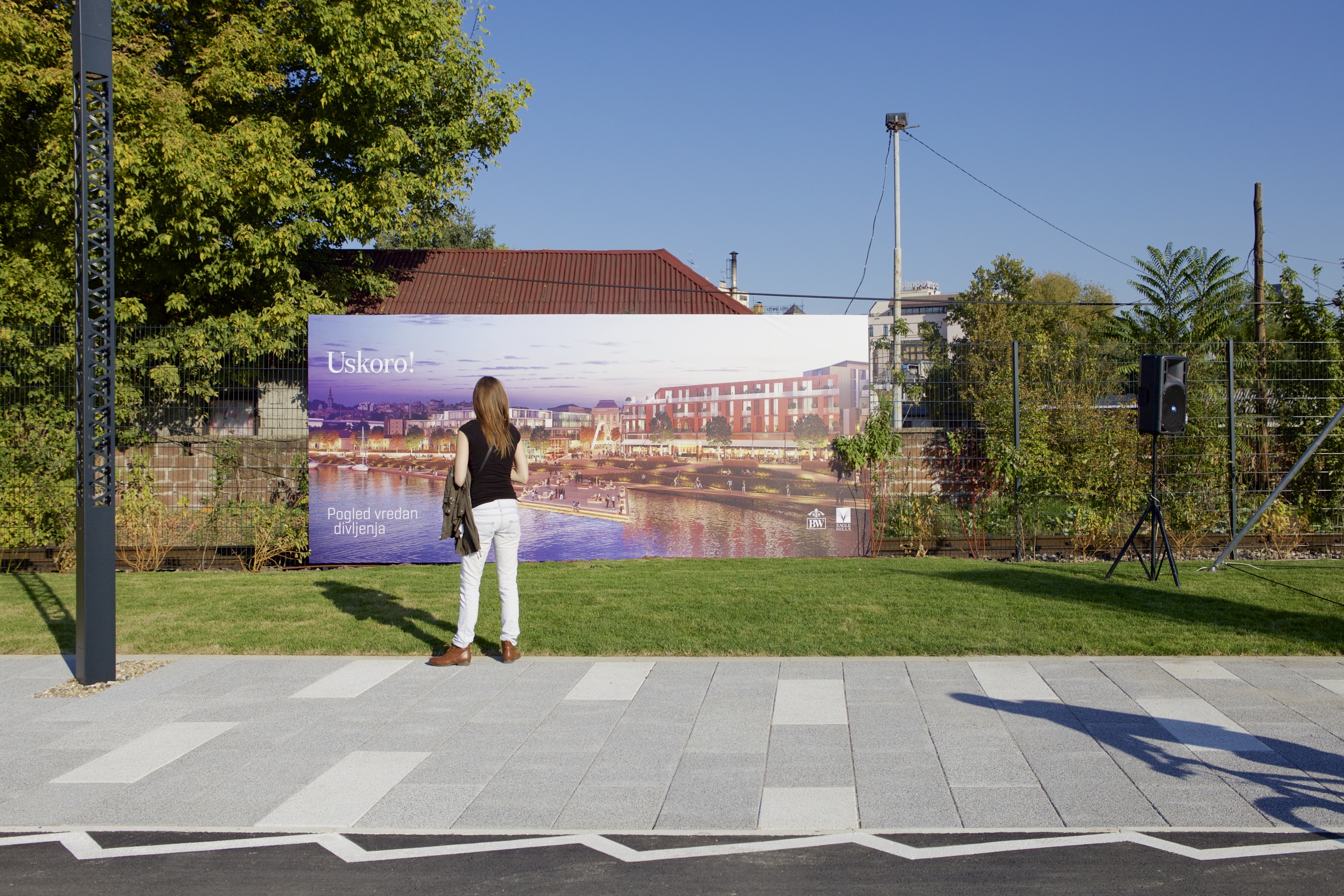
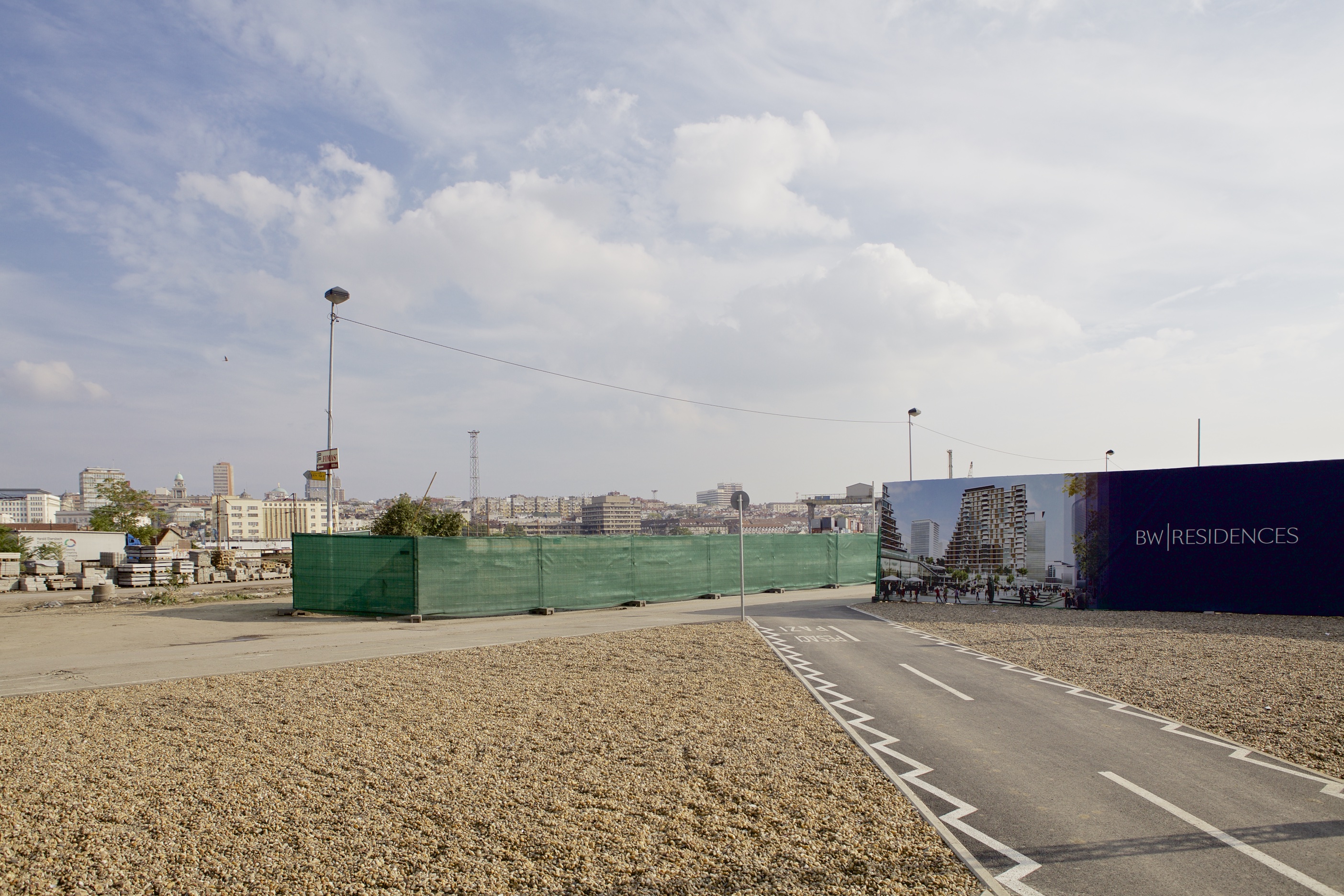
A campaign against the project raised the ampaign against the project raised the voice to denounce the flaws of the process and stop the project but every effort bounced against the total impermeability of the power to any form of public debate. You can hear more here about the Ne da(vi)mo Beograd campaign, the activist initiative that is challenging the project. In the meantime, displacement of residents, demolitions, construction of first building is already going on, and in the same days we were doing our exploration in Belgrade an auction to sell out the first lot of luxury apartment took place.
NE DAVIMO BEOGRAD / BELGRADE ON WATER from OGINO KNAUSS on Vimeo.
Transient City. After listening to Ksenija we remain in the Station Square. In fact, this location provides us also with another conflicting story, as right beyond the corner the park is transformed in a huge camp for refugees aimed at reaching the more affluent cities of Northern Europe. The wealthy vision of luxury loft living symptomatically conflates with the tragedy of people fleeing war and misery.
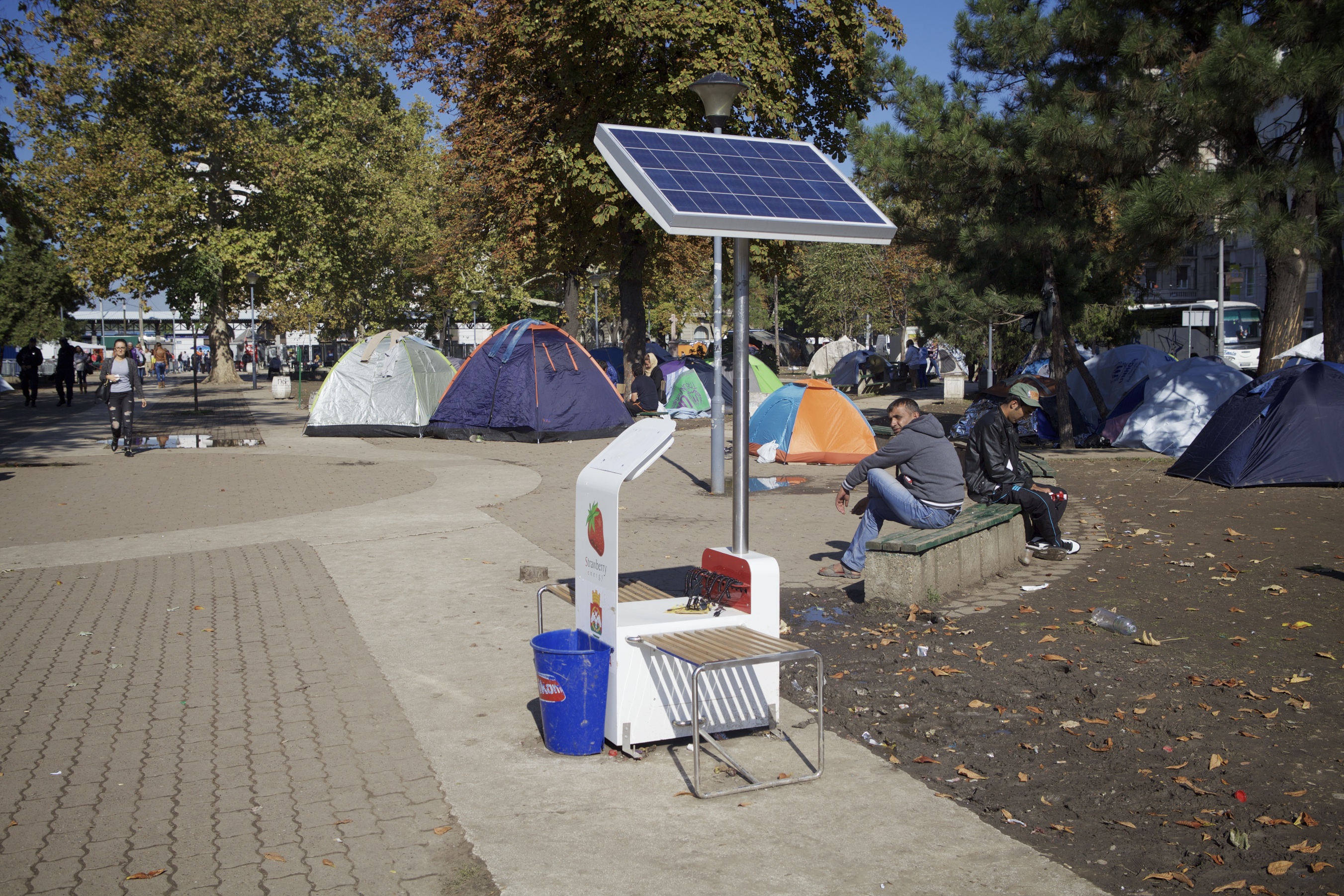
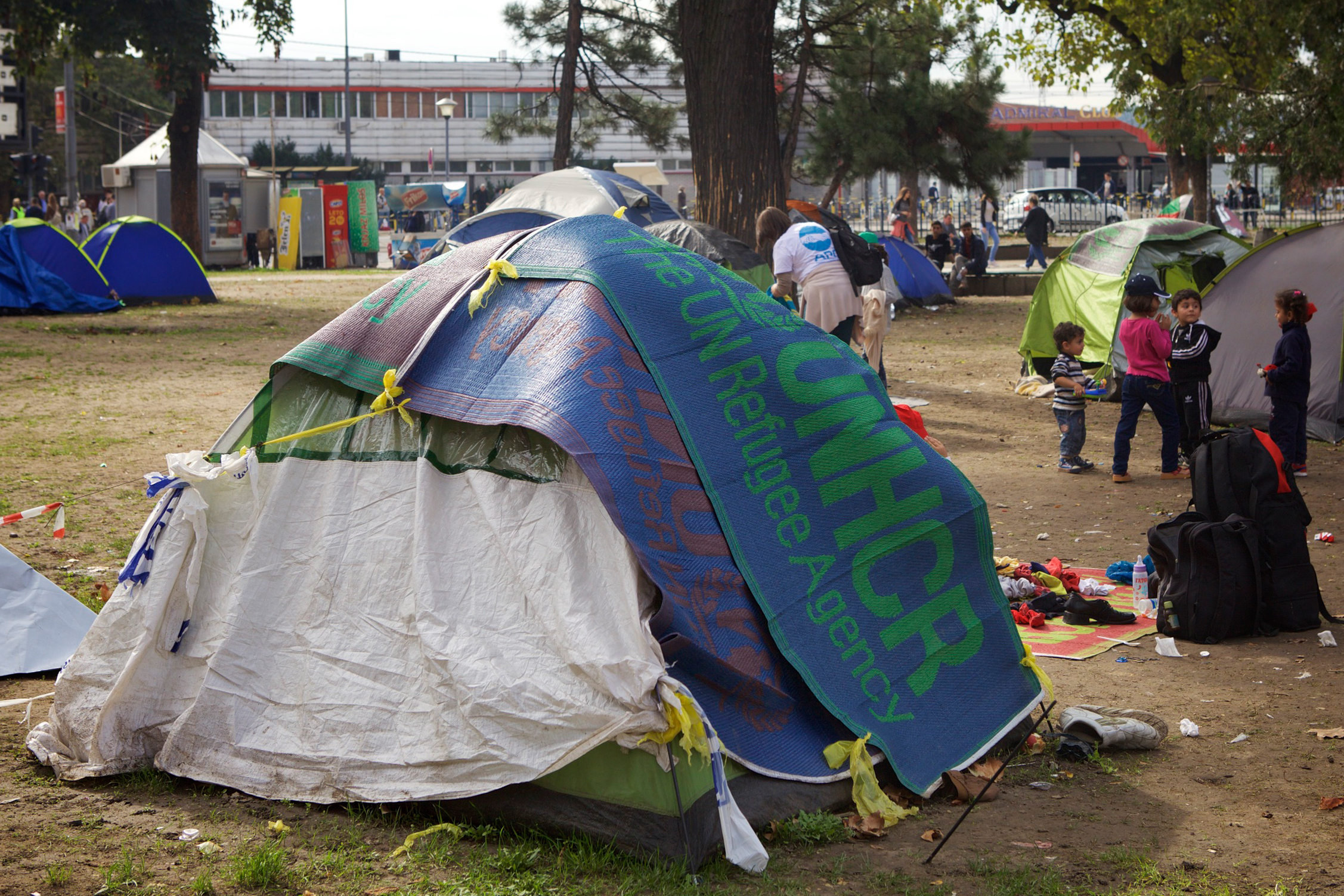
Lorenzo reads here the definition of Transient City, while Luigi proposes the conclusive story of our city walk of the City of Commons.
Text Ksenija Radovanovic. Pictures Manuela Conti / Oginoknauss